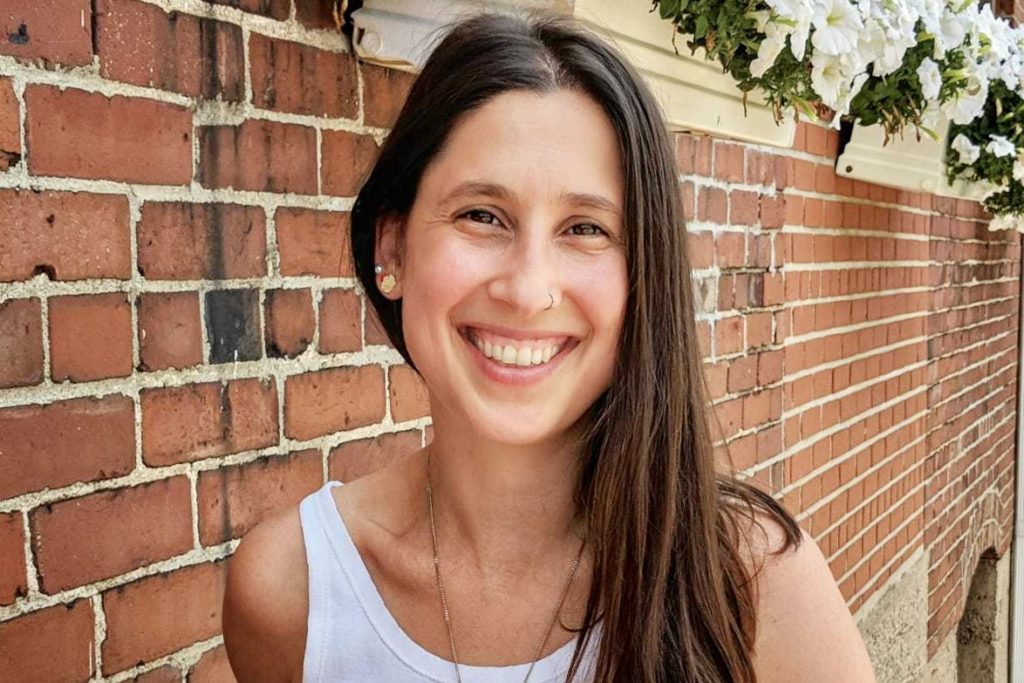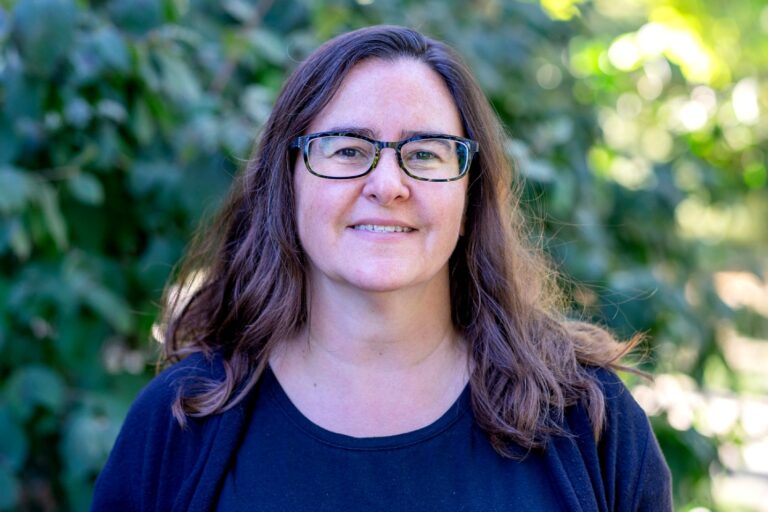Silvina Bongiovanni, Assistant Professor of Spanish in the Department of Romance and Classical Studies at Michigan State University — along with her colleagues from the University of North Carolina-Wilmington, New York University, Illinois-Wesleyan University, and Towson University in Maryland — have received a $50,000 grant from the Spencer Foundation to incorporate perception training into second language pronunciation teaching.
The grant will provide funds to develop a web platform to implement “high variability phonetic training” (HVPT) for second-language classrooms in three languages: French, Japanese, and Spanish.
“Controlled laboratory studies have shown that HVPT is quite effective, but it still remains an underutilized tool in pronunciation instruction,” Bongiovanni said. “Our work seeks to research the implementation of HVPT into real-world language instruction and to make it more accessible as a whole.”
“Our work seeks to research the implementation of HVPT into real-world language instruction and to make it more accessible as a whole.”
When learning to speak a foreign language, students are taught how to pronounce specific sounds of the second language. Most theories that focus on how the sound system of the second language develops make the assumption that it will be easier or more difficult to pronounce these sounds based on perception. If learners perceive two different sounds as nearly the same, that can make it hard for them to remember which words have which sounds, or figure out the meaning of conversations, much less pronounce words intelligibly themselves. In general, research has found that many pronunciation problems can be traced back to problems with perception at its source.
“When you think about how we teach pronunciation, we don’t usually incorporate that assumption,” Bongiovanni said. “If you open any textbook, it will primarily show you how to pronounce the (second language) sounds. And that’s how I used to teach it too. So, we see a disconnect between what the theoretical models take as an assumption for a starting point and what we do in the classroom. Our work tries to bridge this gap between teaching and research.”

That said, incorporating more perception training in the classroom isn’t quite as simple as it sounds, says Bongiovanni. For one, playing individual sounds in isolation during class can take away from the valuable time needed to practice speaking and interacting. Individual students also vary in how much listening practice they need. For example, some native speakers of English might need extensive practice to hear the difference between Japanese words like tsuki and suki (“moon” and “favorite,” respectively), but other learners might only need a few minutes.
Bongiovanni’s research indicates that even those students who struggle to perceive common problematic sounds in a second language can succeed after targeted practice.
“Just the mere exposure to all of that variation has shown that it leads to better listening and comprehension of sounds that are difficult to learn in a second language,” she said.
Bongiovanni and her colleagues began a pilot study in Spring 2020 consisting of students studying French, Japanese, or Spanish as a second language. They designed HVPT trainings following the methodology that had been done in lab settings and integrated it into their classroom as homework activities. The research team also innovated by incorporating more diverse voices and dialects than had been typically represented in other HVPT research.
“We purposely use voices from France but also French-speaking areas like Canada,” Bongiovanni explained. “For Spanish, the voices we used were people from Spain, Cuba, Mexico, and Argentina. That adds to the variation they hear so it’s not only different voices or particular sounds in different parts of the word, it’s also people from different regions of countries with variations in pronunciation.”
“If you find it difficult to perceive the difference between two sounds in your two languages, you’re not doomed. Targeted practice, like HVPT, is beneficial in second language development and, ultimately, success.”
The variability inherent in different voices is theorized to help learners perceive novel speech sounds in a more target-like way, Bongiovanni says.
“The way I explain it to my students is by thinking of colors,” she said. “We can put the label ‘red’ to something, but we know that red comes in different shades, so the idea is that the more types of red they see, or in this case hear, the more accurate they will be at recognizing and attaching the label ‘red’ because they know there are different types of red.”
The pilot study involved 55 learners of French, 31 of Japanese, and 158 of Spanish. Of those, 19 learners of French, 11 learners of Japanese, and 91 learners of Spanish consented to have their data included in the study. Findings so far have been very promising, Bongiovanni said. However, a much bigger sample of students is needed in order to further investigate how HVPT can be successfully implemented in real-world second-language classrooms.
Funding from the Spencer Foundation will help scale up this research when the grant officially begins in January 2024. French, Japanese, and Spanish instructors at MSU, as well as at other institutions, will be invited to beta test HVPT training. To this end, the grant will be used to create a robust website where second-language learners and instructors can register for HVPT activities.
Bongiovanni, who was born and raised in Argentina, joined the faculty at Michigan State University in 2018 and is co-director of the MSU Phonology and Phonetics Group. She has a dual Ph.D. in Linguistics and Hispanic Linguistics from Indiana University. Her main research area, framed within laboratory phonology, is phonetic and phonological variation. She also does research in the development of second language phonology, particularly second language Spanish, and has published work in sociolinguistics as well.
While acknowledging that second language learning is indeed a difficult task as shown in theoretical research, Bongiovanni says real-world language learning shows the perception system of second language learners can be improved.
“If you find it difficult to perceive the difference between two sounds in your two languages, you’re not doomed,” Bongiovanni said. “Targeted practice, like HVPT, is beneficial in second language development and, ultimately, success.”


